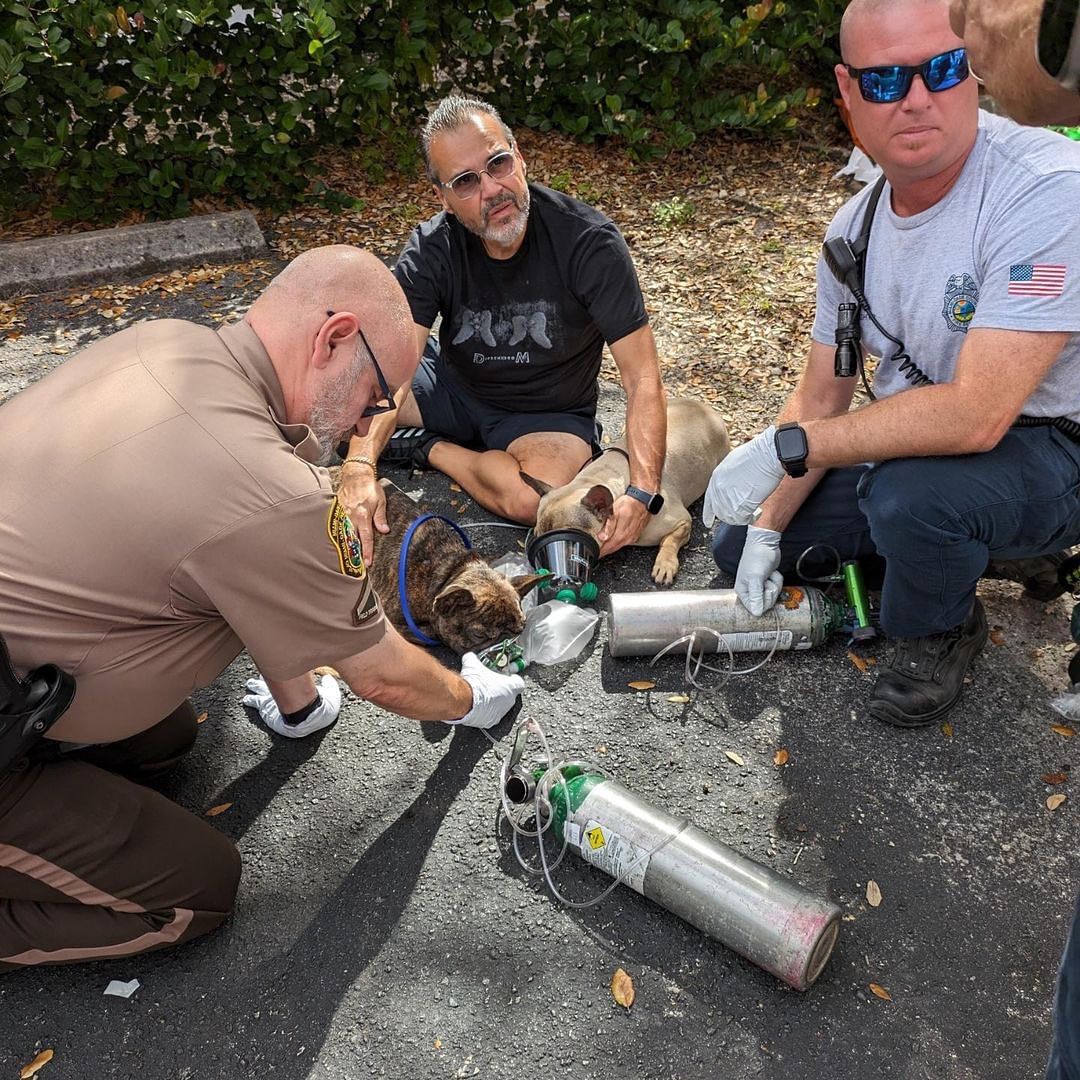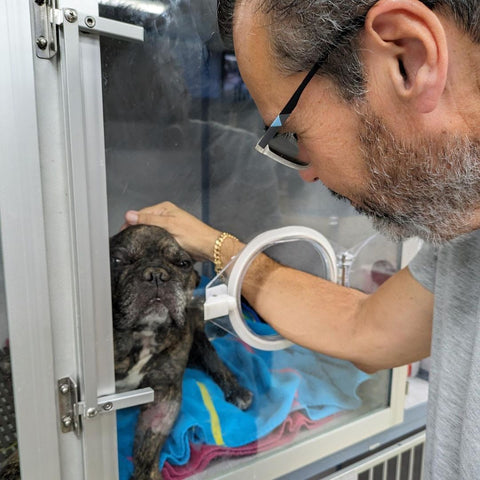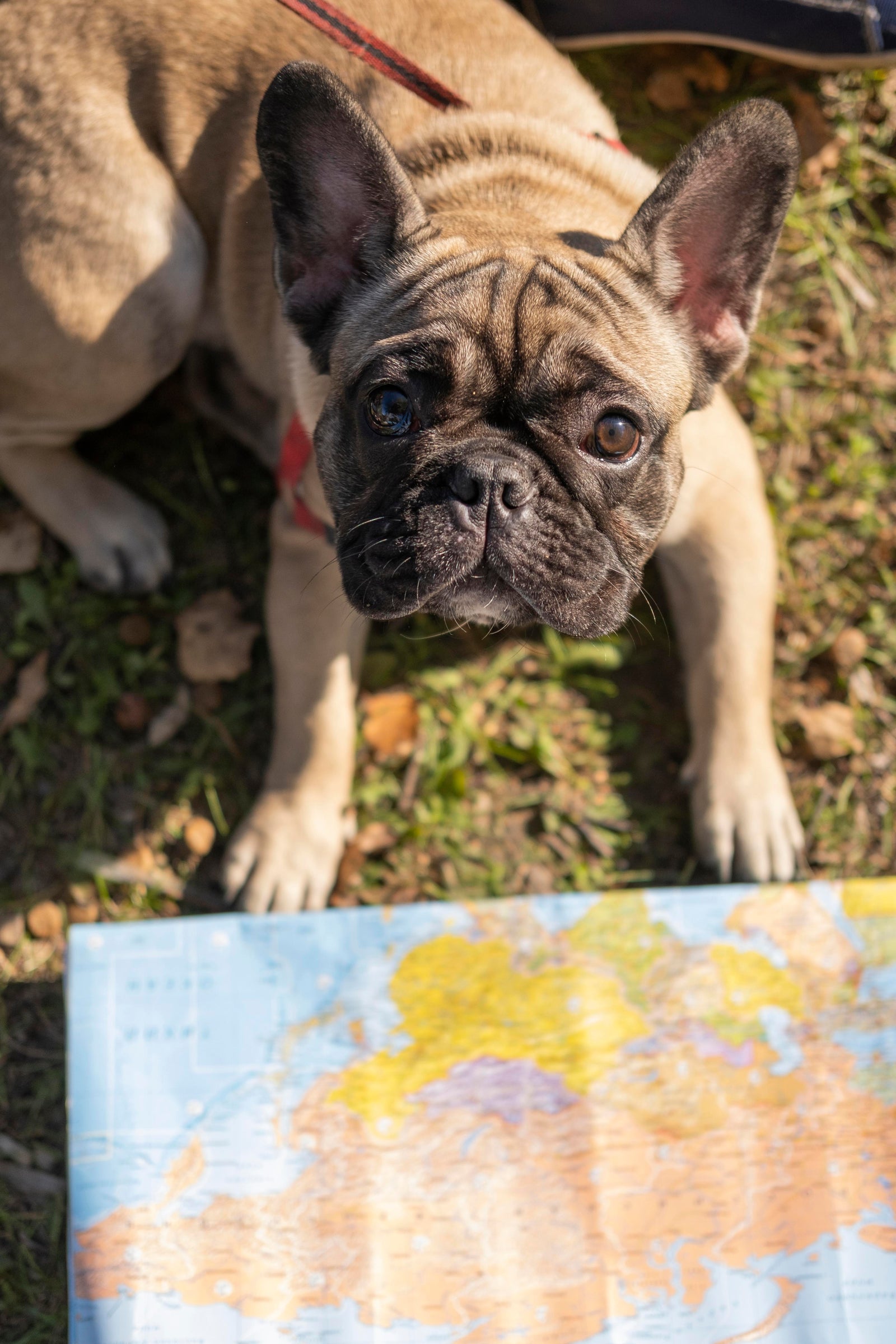Your Cart is Empty
🔥 CLOSE OUT SALE 🔥50% OFF sitewide use code clear final sale, no returns or refunds
🔥 CLOSE OUT SALE 🔥50% OFF sitewide use code clear final sale, no returns or refunds
🔥 CLOSE OUT SALE 🔥50% OFF sitewide use code clear final sale, no returns or refunds

On February 29th, a routine grooming appointment turned into a nightmare. We're sharing this story as a cautionary tale to raise awareness about a hidden danger that could affect anyone—carbon monoxide poisoning.
"For years, we entrusted our beloved pets, Milo and Beans, to a mobile groomer we trusted. They were reliable and treated our dogs with care. But on that fateful day, something went terribly wrong.
As usual, the groomer arrived at our door to pick up Milo and Beans. However, as time passed, my husband noticed that the grooming was taking longer than usual. Concerned, he went to check on them.
When there was no response to his knocks, my husband took matters into his own hands. He found the groomer and both dogs unconscious in the back of the van.
Immediately, he called 911 and, with the help of the Miami-Dade County Police and Fire Department, managed to get everyone out. The groomer was rushed to Mercy Hospital for treatment of carbon monoxide poisoning.

Once the human life was secured, attention turned to our furry friends. Both Milo and Beans were given oxygen and transported to the nearest Animal Hospital. However, Milo's condition was more severe, and he required additional treatment in a hyperbaric chamber.

A week later Milo was released and sent home. Both dogs struggled to recuperate but are doing well. Mental faculties and coordination are improving."
Carbon monoxide (CO) is an odorless, colorless gas that can be lethal in high concentrations. It's produced by the incomplete combustion of fossil fuels, such as gas, oil, and wood. Common sources of carbon monoxide include vehicles, gas appliances, and generators.
High levels of carbon monoxide can quickly lead to poisoning, causing symptoms such as headache, dizziness, nausea, confusion, and even loss of consciousness. Prolonged exposure can be fatal, as it interferes with the body's ability to transport oxygen.
The culprit behind the carbon monoxide poisoning in our mobile dog grooming incident was likely the generator or engine used to power the van. Mobile grooming vans often rely on these machines to provide electricity and run grooming equipment.
Portable Generators: Many mobile grooming vans are equipped with portable generators to supply power for lighting, grooming tools, and other equipment. These generators run on gasoline or diesel and produce exhaust fumes containing carbon monoxide.
Vehicle Engines: In some cases, the vehicle's engine itself can be a source of carbon monoxide. If the engine is left running to provide heat or air conditioning during grooming sessions, or if there's a leak in the exhaust system, carbon monoxide can enter the van's interior.
Detectors:The most effective way to prevent carbon monoxide poisoning is to make sure there are carbon monoxide detectors in the mobile grooming van. These detectors can alert groomers to dangerous levels of CO and prompt them to take action.
Proper Ventilation: Ventilation is crucial to prevent the buildup of carbon monoxide inside the van. Groomers should keep windows and doors open whenever possible to allow fresh air to circulate.
Education and Training: Ensure that groomers are educated about the dangers of carbon monoxide and trained in safety procedures. They should know how to recognize the symptoms of CO poisoning and take appropriate action.
As previously mentioned, Carbon monoxide (CO) is a gas produced by burning fuel, such as gas, oil, wood, or coal and CO poisoning isn't exclusive to mobile grooming vans; it can also occur in homes. To prevent a similar incident from happening to your pets or loved ones, take these precautions:
Install Carbon Monoxide Detectors: Make sure your home is equipped with carbon monoxide detectors. These devices can alert you to dangerous levels of CO and give you time to evacuate safely.
Regular Maintenance: Have your gas appliances, heating systems, and vehicles regularly inspected by a professional to ensure they're functioning properly and not emitting CO.
Proper Ventilation: Ensure proper ventilation in enclosed spaces, especially when using gas-powered equipment.
Never Leave Engines Running Indoors: Avoid running engines, generators, or any gas-powered equipment indoors or in enclosed spaces, such as garages or basements.
Know the Signs: Familiarize yourself with the symptoms of carbon monoxide poisoning and seek medical attention immediately if you or your pets experience them.
Carbon monoxide is often referred to as the "silent killer" because it's odorless and colorless, making it difficult to detect. Here are the symptomsto watch out for:
Headache: One of the most common symptoms is a persistent headache. This headache may feel similar to a tension headache or a migraine.
Dizziness and Drowsiness: Feeling dizzy, lightheaded, or excessively sleepy can be early signs of CO exposure. You may feel like you're about to faint or lose consciousness.
Nausea and Vomiting:CO poisoning can cause nausea and vomiting, often accompanied by stomach discomfort.
Shortness of Breath: especially in individuals with respiratory conditions like asthma.
Confusion and Disorientation: it interferes with the brain's ability to receive oxygen, leading to confusion, memory problems, and difficulty concentrating.
Chest Pain: Chest pain or tightness may occur in some cases, resembling symptoms of a heart attack.
Blurred Vision: Vision problems, including blurred or double vision, may occur due to reduced oxygen supply to the eyes.
Flu-Like Symptoms: symptoms of the flu, including fever, chills, and body aches.
Loss of Consciousness: In severe cases of CO poisoning, loss of consciousness or coma can occur, which can be life-threatening.
Important Note: Symptoms of carbon monoxide poisoning can vary depending on the concentration of CO in the air and the duration of exposure. Infants, elderly individuals, and pets may be more susceptible to CO poisoning. If you suspect CO exposure, seek fresh air immediately and call emergency services. Carbon monoxide poisoning can be fatal if not treated immediately.

The incident involving Milo and Beans serves as a stark reminder of the hidden dangers of carbon monoxide poisoning. It's a threat that can affect anyone, anywhere, and it's crucial to take proactive steps to prevent it.
Whether you're a pet owner, a mobile groomer, or a homeowner, investing in carbon monoxide detectors is a small but potentially life-saving precaution. These devices can provide early warning of dangerous CO levels, giving you and your loved ones time to escape safely.
If you suspect carbon monoxide poisoning, don't hesitate to seek medical attention. The symptoms may be subtle, but the consequences can be severe. Early detection and treatment are key to preventing serious harm.
Thank you for sharing your story @milo.and.beans and remember, awareness saves lives.
May 06, 2024
I also wanted to point out that installation of carbon monoxide detectors should be closer to the floor rather than ceilings or high on walls. Co2 is heavier than smoke from a fire. It takes much more time to fill a room than smoke would. If you install a CO2 detector on the ceiling by the time it reaches that detector it’s likely too late. I sure hope that Milo and Beans are doing better! I couldn’t imagine having this happen to my Frenchie. 🥴
May 06, 2024
Oh I am so sorry Milo & Beans (and your family) had this experience; but this is a great reminder about literally hidden dangers. Thank you for sharing & am glad that your pups are doing better.
Comments will be approved before showing up.

French Bulldogs, with their bat-like ears and affectionate personalities, have soared in popularity. However, their demand has fueled a surge in unethical breeding practices and scams, leaving many hopeful owners heartbroken or financially drained. This guide equips you with actionable steps to find ethical breeders, recognize red flags, and explore adoption alternatives—ensuring your Frenchie journey is safe, responsible, and rewarding.

For millions of pet owners, leaving a furry family member behind during travel is unthinkable. Whether for emotional support, medical necessity, or sheer companionship, the demand for pet-inclusive air travel has surged. By 2025, over 30 global airlines now permit cats and dogs in the cabin—a dramatic shift from just a decade ago, when pets were routinely relegated to cargo holds. This guide explores the evolving landscape of pet-friendly air travel, diving into airline policies, legal distinctions, health considerations, and tips for ensuring a smooth journey for all passengers, both human and animal.

Crate training is often associated with puppies, but it can be equally beneficial for older French Bulldogs. Whether your Frenchie is new to your home or simply hasn’t been crate trained before, introducing them to a crate can provide them with a safe and comforting space. Here’s how to do it effectively while keeping their unique personality and needs in mind.
Helpful information on the French Bulldog dog breed.
We will also notify you with new releases and special offers.
Informational posts about French Bulldogs. Tips and helpful advice on the Frenchie breed and other breeds.
Sign up to get information & expert advice about pets' health and safety. We will also notify you with new releases and special offers.
Lupe on behalf of Milo and Beans
May 06, 2024
Thank you so very much for sharing our story. It is so important to bring awareness to this. We truly had no clue this could actually happen.
So glad so many people care enough to share and teach others what could happen (in an instant).